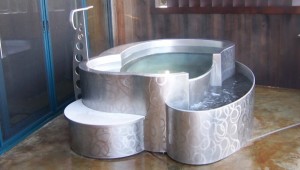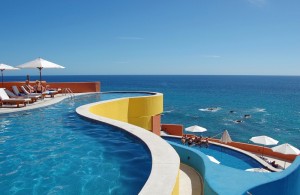Rolling stainless steel to make swimming pools (and steel hot tubs) has become more and more popular over the last few years. Curved stainless steel is frequently used for handrails and ladders but now is quite often also replacing concrete in the structural design. So, what makes this material-process combination so successful? It offers several advantages over regular concrete pools which are mainly based on the characteristics of the stainless material. Steel has lower weight but at the same time an excellent structural strength. Stainless steel also offers a relative ease of use for custom design.
Advanced rolling technologies allow companies specialized in the rolling and bending of steel to roll an impressive variety of thickness, width, and length combinations. This minimizes fabrication and welding times and makes room for increasingly more elaborate and creative custom designs.
Properly maintained, stainless steel vessels have extremely good corrosion resistance, which is an important characteristic for a material constantly exposed to the water and chemicals used in pools today. Stainless steel swimming pools are most commonly made using the 304 or 316 grades of stainless steel. The low weight, combined with the strength of this material makes it ideal for use in both in-ground and above ground installations. Substituting stainless steel for the concrete components may even allow for some to have pools or hot tubs installed on the upper levels of their homes or other buildings, avoiding structural modifications and providing for a unique, aesthetic appearance.
One thing to keep in mind when utilizing curved stainless steel, particularly in applications where it will be exposed to the elements, is carbon-transfer. If stainless material is curved using equipment that also rolls standard carbon steel products, carbon residue in the rollers may be pushed into the stainless material, or cause scratching of the product. This can generally be removed by a process called passivation. When stainless steel is passivated, the material is usually pickled with chemicals to remove scale, debris, and oils, before the passivation creates a restored surface with improved corrosion resistance, which extends the life of the product.









